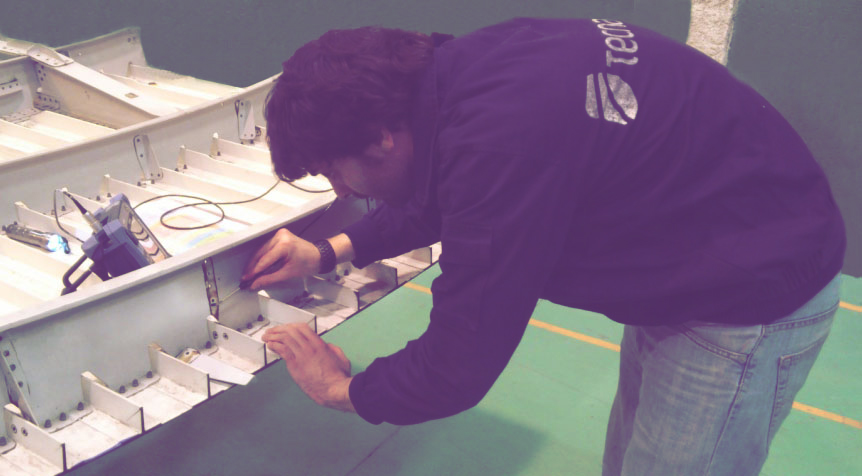In the industrial world, a great many components are studied in order to determine the structural status of the different materials of which they are made. Different methods may be encountered depending on the engineering requirements of each particular sector, these constituting what are known as Non-Destructive Tests (NDT).
We are going to deal here with one of the most widely used NDT methods, Eddy Current Testing (ET).
Put in rather technical terms, eddy current tests are an inspection method based on the phenomenon of electromagnetic induction. They consist on inducing an alternating current in electrically conducting materials, using a variable magnetic field created by a solenoid excited by an oscillator (similarly to what occurs in a transformer).
Why are eddy currents useful?
These currents allow the inspection of conducting metallic materials with a view to detecting the presence of surface and sub-surface discontinuities (up to a few millimetres in depth), and also make it possible to determine the degree of homogeneity and certain metallurgical and mechanical characteristics.
The most widespread applications of this type of tests are as follows:
- Measurement or identification of electrical conductivity, grain size, heat treatment, hardness and the physical dimensions of materials.
- Detection of discontinuities in materials, such as cracking, cavities, inclusions, etc.
- Classification of similar metals and the detection of differences in their composition, microstructure and other properties.
- Measurement of the thickness of non-conducting coatings on conducting materials or non-magnetic coatings on magnetic materials.
Eddy currents will be use in the different phases of the process in which the component to be tested is involved: during manufacturing or when the component is already installed in its definitive location (pre-service inspection (PSI) or in-service inspection).
Advantages and limitations of eddy currents
The advantages of this method are as follows:
- Direct contact with the part to be inspected is not necessary.
- No coupling medium is required.
- It allows for high inspection rates (more than 1 metre/second).
- The results are repeatable, as long as the essential variables of the test remain unchanged.
- It may be applied in the solving of many problems associated with the physical and metallurgical requirements of conducting materials.
- The inspection processes may be automated.
The limitations of the method are as follows:
- It is applicable only to electrically conducting materials.
- Its effectiveness for the detection and characterisation of irregularities decreases considerably at depths of more than 6 mm.
- Given the sensitivity of the method and the many properties and characteristics inherent to the material itself, certain variables that are not part of the test may mask important indications or be interpreted erroneously, since they give rise to undesirable signals in the instruments.
- The inspection of ferromagnetic materials poses problems of repeatability due to their high magnetic permeability. On occasions a special technique known as far-field inspection is required.
In what sectors are eddy currents applied?
Given the aforementioned advantages, this method is applicable to a multitude of sectors entailing the inspection of electrically conducting materials, such as:
- Aerospace inspections: where a number of different components such as the fuselage, cabin, horizontal tailplane (HTP) and vertical tailplane (VTP), landing gear, etc. are inspected, the objective being the detection of defects, tyre overheating, the measurement of paint and the detection of corrosion, among other things.
- Power generation: where inspections are performed on components critical for the safety and operation of electricity-generating facilities, such as nuclear power plant steam generators, heat exchangers and condensers, etc.
- Automobile industry: eddy currents are incorporated in the production chains or maintenance services. They allow the internal status of materials to be determined and are capable of evaluating their operating and safety conditions.
- Railways: where it is necessary for the in-service inspection of structures to be rapid and cause the lowest possible impact on the operation of the installations, allowing for the prompt and automatic detection of defects and non-conformities.






